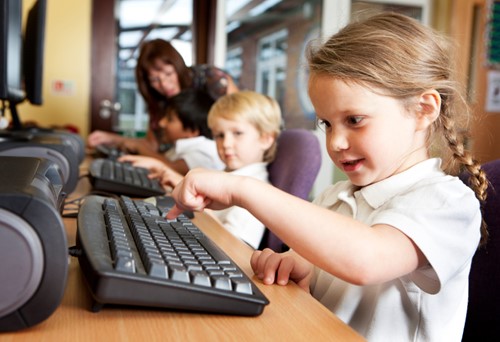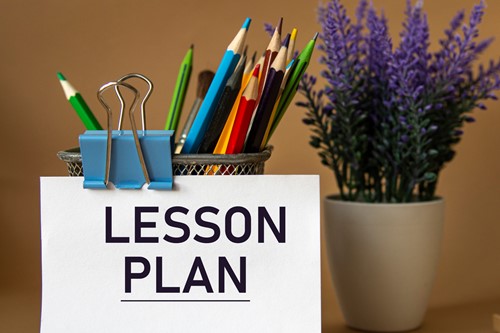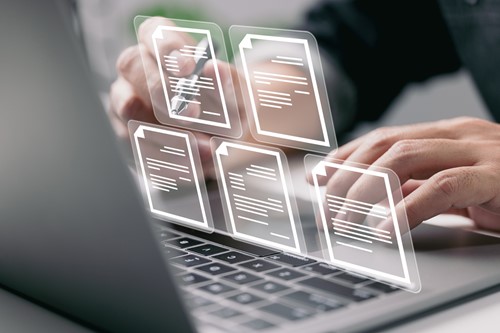Why is it so Hard to Integrate Technology in Education?
Technology has transformed education, offering powerful tools to enhance engagement, creativity, and learning outcomes. However, many educators struggle with integrating technology in education, particularly in early childhood settings.
Some of the most common challenges include:
- How to integrate technology in teaching without it feeling disconnected from the lesson.
- Selecting the right technology that enhances, rather than distracts from, learning.
- Designing lesson plans that integrate technology effectively rather than using it as an afterthought.
- Ensuring technology supports curriculum goals, such as EYLF learning outcomes in early childhood education.
Why Traditional PD Isn’t Enough
Many educators attend workshops or read articles about technology integration in early childhood education, but they don’t get the ongoing support needed to apply what they learn. This is why one-off PD sessions often fall short.
💡 The ICT in Education Teacher Academy provides a solution! Unlike traditional PD, our membership is a hub of resources that provides structured lesson plans, a workbook for guided application, and a community of educators sharing real-world solutions.

How Can Technology Be Successfully Integrated Into Education?
The key to successful technology integration in education is ensuring that digital tools enhance learning rather than replace traditional teaching methods.
Common Barriers to Integration
🚧 Lack of structured lesson plans that integrate technology effectively.
🚧 Educators not knowing how to integrate technology in the classroom for long-term impact.
🚧 Limited support for customizing ICT activities for different learning environments.
🚧 Over-reliance on technology for passive learning instead of active exploration and problem-solving.
💡 Solution: Educators need structured resources to guide them through the process of integrating technology into lesson plans—not just one-off PD sessions.
The Role of the Membership in Supporting Educators
The ICT in Education Teacher Academy provides:
✔ Preschool technology lesson plans aligned with EYLF learning outcomes.
✔ A workbook that helps educators reflect, refine, and improve their approach to ICT integration.
✔ A professional learning community to share experiences, seek support, and discuss best practices.
Instead of struggling to integrate technology in your lessons, the membership guides you through the entire process—step by step.

What Role Does Technology Play in Early Childhood Education?
Technology in early childhood education should be a tool for active learning, not just passive screen time. It needs to be embedded into play-based and inquiry-driven learning experiences.
The Importance of Integrating Technology in the Preschool Classroom
- Supports collaborative learning, helping children work together through digital storytelling or coding activities.
- Encourages creativity and self-expression through digital art, animation, and augmented reality.
- Develops problem-solving skills by using ICT integration in early childhood education to create, design, and experiment.
Benefits & Challenges of Technology in Early Childhood Classrooms
✔ Benefits:
- Enhances early language development and literacy.
- Supports STEM education through interactive tools.
- Helps develop collaborative and communication skills.
- Encourages self-directed learning and exploration.
❌ Challenges:
- Overuse of screens can limit hands-on play experiences.
- Lack of structured planning can result in technology being used inconsistently.
- Educators may struggle with lesson planning in early childhood education that integrates technology effectively.
💡 Solution: The membership provides:
📌 Technology in early childhood education PDF resources for best practices.
📌 EYLF-aligned lesson plans with clear technology integration.
📌 Community discussions where educators share what works in their classrooms.

What Teaching Strategies Work Best for Integrating Technology in ECE?
Many educators ask: How do I use technology in a way that enhances learning rather than just keeping children entertained?
Effective Teaching Strategies for Preschoolers Using ICT
Integrating technology into early childhood education requires intentional and evidence-based teaching strategies that align with young learners' developmental needs. Here are effective approaches to consider:
1. Intentional Teaching
Intentional teaching involves educators being purposeful in their decisions and actions, building on children's strengths, interests, and needs. This strategy extends children's thinking and fosters deep understanding through both emergent and planned experiences. By embracing intentional teaching, educators can effectively integrate technology to enrich learning outcomes. ICTE Solutions
2. Explicit Instruction
Explicit teaching strategies involve clear, direct teaching of concepts, often through demonstration and guided practice. In the context of technology integration, this means educators explicitly show children how to use digital tools, fostering ICT capability from an early age. ICTE Solutions+4ICTE Solutions+4ICTE Solutions+4ICTE Solutions
3. Modeling Appropriate Use
Children learn by observing adults. Educators should model respectful and purposeful technology use, demonstrating how digital tools can enhance learning and creativity. This sets a positive example and establishes clear expectations for technology use in the classroom.
4. Mini-Lessons Prior to Activities
Introducing technology through focused mini-lessons before the main activity helps children understand the tools and their purposes, reducing distractions and enhancing participation. This preparatory step ensures that technology is used meaningfully during learning activities.
5. Scaffolding
Providing support structures helps children progress in their understanding and use of technology. As their competence grows, educators gradually remove these supports, promoting independence and confidence in using digital tools.
6. Project-Based Learning
Engaging children in projects that incorporate technology fosters collaboration, problem-solving, and real-world application of skills. For example, creating a digital story or conducting simple research using age-appropriate software can make learning more interactive and meaningful.
7. Differentiation
Recognizing that children have diverse learning styles and paces, technology can be used to tailor educational experiences. Interactive apps and programs allow for customization, ensuring that each child's unique needs are met, thereby enhancing engagement and learning outcomes.
By implementing these strategies, educators can create a dynamic and inclusive learning environment where technology serves as a catalyst for exploration, creativity, and foundational skill development in early childhood education.
💡 How the Membership Helps:
- The ICT in Education Teacher Academy provides structured lesson plans, guiding educators through how to introduce, modify, and assess technology use in early learning.
Instead of struggling with how to integrate technology, members receive clear strategies and structured lesson plans that they can adapt to their classrooms.

Why Do Most Technology-Integrated Lesson Plans Fail?
Many educators start their technology integration journey with high expectations, only to struggle with implementation. They download pre-made preschool technology lesson plans, try them once, and then either abandon them because they don’t work as expected or fail to adapt them for long-term use.
This happens because most educators lack a structured approach to integrating technology in their classrooms. Simply downloading a lesson plan is not enough. The real challenge lies in adapting, modifying, and refining lesson plans to fit different learning environments and student needs.
📢 The ICT in Education Teacher Academy provides a solution that goes beyond lesson plans—it provides a structured learning journey through its membership workbook and success path.

How Does the Membership Success Path Help You Move Beyond Just Downloading Lesson Plans?
The ICT in Education Teacher Academy follows a structured success path that guides educators through four stages of technology integration:
1. Adoption Stage – "I am exploring technology-integrated lesson plans."
- Educators download technology-integrated lesson plans and begin experimenting with ICT activities for preschoolers.
- Many educators stop at this stage because they don’t know how to assess effectiveness or make modifications.
- The workbook provides reflection questions to help educators document what worked and what didn’t.
2. Adaption Stage – "I am adjusting technology-integrated lesson plans to suit my classroom."
- Educators learn how to modify lesson plans based on student needs and EYLF learning outcomes.
- Common challenges in this stage:
- "How do I adjust a digital storytelling lesson for children with different literacy levels?"
- "How do I scaffold an ICT-based activity for children with little tech experience?"
- The workbook offers step-by-step guidance on how to adapt lesson plans, ensuring each child can participate meaningfully.
- Example from the membership: A digital nature walk lesson originally designed for outdoor learning can be adapted for indoor play-based learning using digital tools like magnifying apps or interactive whiteboards.
3. Infusion Stage – "I am embedding technology into multiple learning areas."
- At this stage, educators naturally integrate ICT across various learning domains like literacy, numeracy, and problem-solving.
- Example of an infused lesson plan: Instead of just using Bee-Bots for coding practice, an educator integrates them into a math lesson, programming the Bee-Bot to solve simple addition and subtraction problems.
- The workbook includes templates to help educators design cross-curricular technology-integrated activities.
4. Transformation Stage – "Technology is embedded into my teaching approach."
- Educators no longer see technology as a separate component—it becomes a natural part of how learning happens.
- Lesson plans at this stage go beyond structured activities and allow for student-led learning.
- Example of a transformed lesson plan: Instead of following a fixed digital storytelling activity, children collaboratively create a stop-motion animation project, using technology to bring their own stories to life.
What Does the Membership Workbook Say About Lesson Plans?
1. Lesson Planning is an Evolving Process
The workbook emphasizes that lesson plans are not static. Instead of using them as one-time activities, members reflect, adapt, and enhance their lesson plans over time.
2. Lesson Plans Should Be Shared & Discussed in the Community
The workbook encourages members to:
✔ Upload modified lesson plans to the membership community.
✔ Seek feedback from other educators on how to refine lessons.
✔ Learn from shared experiences, seeing how other members have adapted the same lesson plans in different settings.
3. Educators Should Use the Lesson Plan Templates to Create Their Own Plans
- The membership provides lesson plan templates for educators who want to develop their own technology-integrated activities.
- Guidance is provided on how to connect EYLF learning outcomes with digital play-based experiences.
4. Educators Reflect on Their Growth Using Lesson Plans
The TPACK radar chart in the workbook allows educators to track their progress in technology integration. Members can compare:
✔ How their lesson planning skills have evolved from the Adoption to the Transformation stage.
✔ How confident they are in applying and modifying technology-integrated lesson plans.
✔ What areas still need improvement, based on real classroom experiences.
📢 Educators don’t just use lesson plans in this membership—they learn how to master and evolve them into powerful teaching tools.

What Types of Lesson Plans Are Available in the Membership?
One of the biggest frustrations educators face is finding lesson plans that actually work in a real-world early childhood classroom. Many free or generic preschool technology lesson plans fail because they:
🚨 Don’t align with curriculum goals, such as EYLF learning outcomes.
🚨 Aren’t developmentally appropriate, often designed for older children rather than preschoolers.
🚨 Don’t provide guidance on differentiation, leaving educators unsure of how to adapt them for diverse learners.
🚨 Lack a clear connection between technology and play-based learning, making it difficult to integrate them into early childhood education effectively.
💡 This is why the lesson plans inside the ICT in Education Teacher Academy stand out—they are not just templates, but complete, adaptable resources designed to evolve with your teaching practice!
Each lesson plan is EYLF-aligned, developmentally appropriate, and tested in real classrooms. What makes them even more valuable is that they are more than just plug-and-play activities—they come with guidance on reflection, modification, and discussion with other educators.
Creative Play & Digital Storytelling
🎨 Speech Bubbles & Digital Storytelling
- A unique lesson where children take photos and add digital speech bubbles, developing early literacy and communication skills.
- Why it’s different: This lesson isn’t just about using technology—it teaches children to express emotions and thoughts through digital storytelling.
🎭 Digital Puppet Theatre
- Children design digital puppets, create dialogues, and record performances.
- Why it’s different: Unlike traditional puppet play, this lesson integrates digital creativity, giving children a new way to express themselves through technology.
🎞 Stop-Motion Animation for Preschoolers
- Children create animated stories using stop-motion techniques, reinforcing story sequencing and problem-solving skills.
- Why it’s different: This lesson plan turns passive content consumers into digital creators, making technology an active learning tool.
Membership Exclusive: Members can adapt these lesson plans and share their experiences in the community, getting feedback from other educators.
Outdoor Play & STEM Learning
🌿 QR Code Nature Hunt
- A tech-infused scavenger hunt where children scan QR codes hidden outdoors to discover interesting facts about nature.
- Why it’s different: It blends physical movement with technology, keeping children engaged while learning outdoors.
📸 Digital Nature Walk & Photography
- Encourages children to capture images of nature, discuss what they find, and use digital tools to edit and present their discoveries.
- Why it’s different: Instead of just taking photos, this lesson teaches children to observe, analyze, and communicate their experiences.
🤖 Bee-Bot Outdoor Maze Challenge
- Children design and navigate mazes using programmable Bee-Bots, developing coding and problem-solving skills.
- Why it’s different: This is a hands-on introduction to computational thinking, making coding tangible for preschoolers.
Membership Exclusive: The workbook provides adaptation strategies, so educators can modify outdoor play lessons for different environments (urban vs. nature-based settings).
Language Development & Literacy
🗣 Digital Puppet Conversations
- Using digital puppets, children record and play back conversations, practicing sentence structure, tone, and pronunciation.
- Why it’s different: It turns language development into an interactive digital experience.
📖 Interactive Storytelling with Speech Bubbles
- Children use digital storytelling apps to create and edit short stories, enhancing reading and writing skills.
- Why it’s different: The lesson combines technology with traditional storytelling, reinforcing early literacy in a dynamic way.
🔤 Animated Alphabet & Phonics Exploration
- Uses stop-motion animation to create interactive phonics exercises, helping children connect letters with sounds.
- Why it’s different: It transforms phonics learning into a hands-on creative activity that deepens comprehension.
Membership Exclusive: Members receive alternative versions of each literacy lesson plan, so they can choose activities that match different skill levels and learning preferences.
Problem-Solving & Digital Play-Based Learning
🌀 Maze Navigation with Programmable Toys
- Children program Bee-Bots or similar toys to navigate through mazes, developing logical thinking and sequencing skills.
- Why it’s different: This activity introduces coding fundamentals without requiring screens, making it developmentally appropriate for preschoolers.
📚 Collaborative Storytelling with Bee-Bots
- Instead of just programming robots, children use them to act out a story, integrating coding and literacy development.
- Why it’s different: It connects computational thinking with language skills, reinforcing multi-disciplinary learning.
🎬 Problem-Solving Challenges with Stop-Motion Animation
- Children create short stop-motion problem-solving scenarios, such as how to cross a river or build a shelter using digital drawings.
- Why it’s different: This integrates storytelling, digital creativity, and problem-solving into one dynamic lesson.
Membership Exclusive: The workbook guides educators in modifying these lessons for different levels of technology experience.
What Else Do Members Get?
🔹 A Clear Learning Path: Lesson plans are part of the Adoption → Transformation journey, ensuring educators move beyond basic implementation into expert-level integration.
🔹 Customizable Templates: Every lesson plan includes modification tips so educators can adjust activities based on classroom needs.
🔹 Access to an Exclusive Community: Members share their modified lesson plans and receive personalized feedback from experienced educators.
🔹 Guidance from the Workbook: Each lesson plan connects to reflection activities that help educators assess what worked, what didn’t, and how to improve.
📢 No other membership offers this level of support, structure, and adaptability!
Are These Lesson Plans Right for You?
🚀 Are you tired of generic lesson plans that don’t fit your teaching style?
🚀 Do you want lesson plans that can be modified and adapted over time?
🚀 Would you benefit from expert guidance and a supportive educator community?
📌 If you answered YES, then the ICT in Education Teacher Academy is exactly what you need!
🔎 Join today and transform your approach to technology integration in early childhood education!


How Do You Finally Master Technology Integration in Teaching?
How to integrate technology in the classroom effectively?
Integrating technology in the preschool classroom is not just about using digital tools—it’s about using them with purpose and intention. The challenge for many educators isn’t access to technology, but rather how to integrate technology in the classroom in a way that aligns with EYLF learning outcomes, play-based learning, and individual student needs.
If you've ever downloaded a technology-integrated lesson plan and found yourself asking:
❌ How do I adapt this for my students?
❌ How do I make this part of my everyday teaching rather than a one-off activity?
❌ How can I confidently plan ICT activities that truly support learning rather than just entertain?
Then you’re not alone. Many educators face these same struggles—and that’s exactly why the ICT in Education Teacher Academy exists.
This isn’t just another PD workshop where you watch videos and move on. It’s a complete, structured membership designed to guide you through every stage of technology integration.
✔ You’ll get done-for-you, EYLF-aligned lesson plans that are proven to work.
✔ You’ll learn how to adapt and modify these lesson plans to suit your unique teaching environment.
✔ You’ll track your growth and confidence using the membership workbook.
✔ You’ll connect with a professional learning community, getting support, feedback, and inspiration.
💡 With the right support, technology integration stops being frustrating and becomes a natural part of your teaching practice.
🚀 Are you ready to stop wondering how to integrate technology in the classroom and start mastering it instead?
🔎 Join the ICT in Education Teacher Academy today and take the next step toward confidently using technology in your preschool classroom!
What’s holding you back from integrating technology into your preschool classroom? Let’s talk about it inside the membership! 🚀
